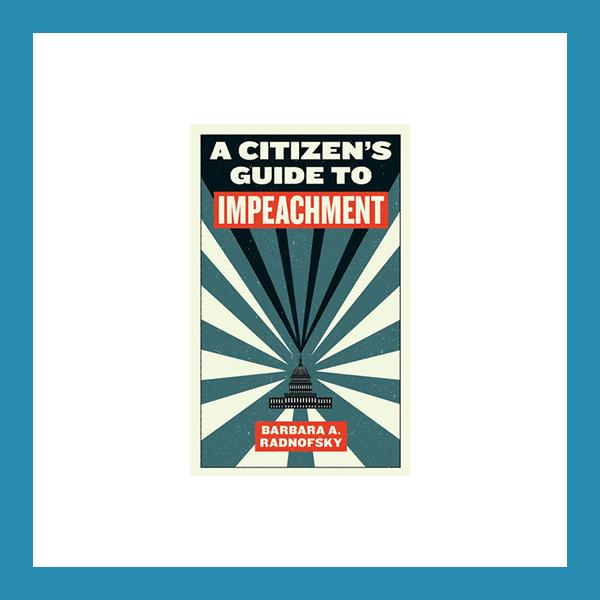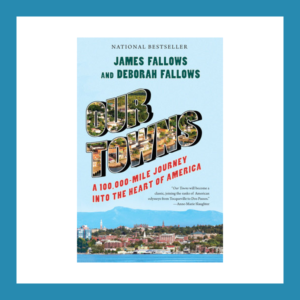By D. Alexander Wait
Missouri State University
Academic scholars often step out of their academic circles and into the civic arena. Some do this on their own volition, others are asked to step into the civic arena by colleagues, administrators or members of their community. However, the boundary line between academics and civics is not well defined, nor are the consequences. Crossing the line from academic circles or “silos” into the civic arena is called “academic public engagement.”
Academic training does not, per se, address civic engagement, nor does the academic promotion system reward civic engagement. Amy E. Lesen has edited a book that addresses many questions dealing with “how scientists, scholars, and other experts engage with the general public and with the communities affected by their work or residing in their sites of study.” The book clearly contributes to the growing body of scholarship and discussion about academic civic engagement. This book is relevant to “experts” (researchers, scholars, scientists, academics) thinking about civic engagement, and those who rely on the experts for information (e.g., community organizations, politicians, managers, administrators).
The book may be timelier in 2017 than when it was published in 2015. For example, many scientific societies such as Sigma Xi and the Ecological Society of America provide literature to their members on effective ways to be civically engaged. The literature addresses issues such as effective ways to contact and engage elected officials, how to write letters to the editor in local newspapers, how to talk with reporters. There is an emphasis on “choice” in this literature. That is, civic engagement is a choice to be made by individual scientists. Interestingly, the language in some of the literature in scientific societies made available to members has changed since January 2017. The more recent literature being disseminated to scientists from member scientific organizations strongly recommends civic engagement in areas of science funding and existing laws associated with a particular science. For example, the Society for Conservation Biology is openly concerned about potential changes to the U.S. Endangered Species Act and suggests ways conservation scientists can become “civically” involved; the Ecological Society of America suggests members should write their legislators about the importance of funding science that is related to ecosystem services and climate change.
Chapters in the book are aptly written by scientists, scholars, and “experts.” These authors, and about 20 others were brought together in 2010 in a National Science Foundation-funded symposium entitled Walking a Fine Line: Scientists, Experts, and Civic Engagement. Eight authors from that workshop have contributed to this book, seven being academics and one the Traditional Chief of the Isle de Jean Charles Band of Biloxi-Chitimacha-Choctaw Indians. The academic backgrounds of the authors include biophysical science, environmental science, geography, Latin American studies, history, and anthropology. The authors’ current positions range from traditional academic faculty to directors of academic programs or nonprofit organizations. Even with a small number of authors, the breadth of their backgrounds portends that the book can provide insight across many academic fields. The book does deliver on that point. Academics that have, or are considering civic engagement, should read this book.
Academics in the sciences are at the heart of this book. Many have learned the lessons pointed out in this book the hard way. For example, a researcher’s colleagues may question civic engagement if they feel it is being done at the expense of a researcher’s productivity. On the other hand, administrators may question involvement in issues that they think are beyond a given researcher’s expertise and training. In the end, an academic scientist may find civic engagement to be personally rewarding, but at times very frustrating. If a scientist is working at an institution where civic engagement is rewarded as a “service” activity, then they may be encouraged freer to be civically engaged. However, if a scientist is working at an institution where it is not considered a service activity, they could be penalized for being civically engaged.
The book is more relevant to the normative sciences: conservation science and sustainability science, rather than biology or ecology. For example, as a plant ecologist (“plant scientist”), I believe I am, “ethically” held to approaching my field as a descriptive science. Therefore, as an ecologist, I feel uncomfortable being civically engaged. I can explain to you how plants respond to changes in temperature, precipitation and carbon dioxide; but I might be asked by citizens if increasing carbon dioxide in the atmosphere as a result of human activities is “good” or “bad.” I am not comfortable answering that question, although I have publicly on panels and in newspaper editorials. On the other hand, in the conservation biology research I have been involved in (e.g., conservation and restoration of seabird islands), it is expected that I disseminate information to other scientists, to the general public, and to policymakers.
I have observed and known highly productive and respected ecologists that are adamant that civic engagement is not “in their job description”. I have also known some at the other extreme, and sometimes they have lost credibility in their circle of scientists. I have personally chosen to take a measured and cautious approach. As such, I was particularly drawn to the first chapter in the book (“When you leave town, I’ll leave town: insights from a civically engaged researcher in postdiluvian New Orleans”). The author uses his experience of hesitantly emerging from his research to answer calls for academic expertise from fellow citizens. The context is the aftermath of Hurricane Katrina. The author’s sage advice will stick with me. For example, when to simply say “no thanks” to offers to speak, and when to put one’s self out in front of an issue.
The book is separated into two sections: “Civically engaged academicians: theories, challenges, and opportunities” and “How we engage: modes of participation, from digital social media to radical democracy”. The first section provides specific author experiences with civic engagement and includes an excellent theoretical overview of civic engagement. The second section provides a detailed treatment of civic engagement in practice. The second section is suggested to be “radical.” However, the approaches are fresh, new and articulated clearly both through citing literature and the author’s experiences.
The book is, I believe, best read and viewed as separate “papers.” The book will probably not be read cover to cover by many. For example, I teach a course with a service-learning component, and Chapters 2-4 made me reevaluate how I carry out that service-learning component. I would recommend some chapters to my research science colleagues (Chapters 1-3, 8), other chapters to my science education colleagues (Chapters 4-6), and yet others to my social science colleagues (Chapters 6-8). There are chapters relevant to graduate students in many disciplines, a chapter relevant to undergraduate students, and chapters relevant to administrators. Any academic who is currently, or is thinking about moving a course toward “student-centered” civic engagement would be wise to read chapter 3 (“Somewhere between the ideal and the real, the civic engagement ‘expert’ learns and let’s go).”
There are a couple of other chapters that really stood out. Chapter 6 (“Participatory action-citizen engagement: when knowledge comes from the academy and the community”) posits that the scientific community and government agencies are finding that the public’s confidence in their work and leadership is diminishing. Recent polls suggest this is truer today than it was 2 or 5 or 10 years ago. The solution offered is “Participatory Action Research (PAR).” PAR is presented as one way to move beyond traditional academic silos. There is a very interesting discussion of human subject’s research and institutional review board (IRB) protocols. The approval through an IRB is required by any researcher working with humans. The author argues for going beyond the traditional IRB and establishing a “mutual” IRB with the community where the research is taking place. This IRB would specifically include a “declaration of community rights.” I have very little experience with the IRB process; however, I feel compelled after reading the chapter to bring up mutual IRBs with colleagues and administrators.
Chapter 4 (“Community enrollment: colleges and the fault lines between academic and civic engagement”) details a program that collapses three familiar categories of civic engagement, service learning, engaged scholarship, and community-based research, into “community enrollment.” “Community enrollment” is argued to “narrow the artificial divide between classroom and community purpose.” This chapter is also relevant to undergraduates in a class with a service learning or civic engagement component. I would suggest assigning this chapter to service-learning students. Any academic or administrator familiar with Imagining America will find in this chapter solid lessons for implementation and success of civic engagement in an institution and in the classroom.
It is not uncommon for researchers (including graduate students), nonprofit organizations, and journalists to be working in communities “in need.” And those “visitors” may be inclined to provide “help” and resources. However, these visitors might be likened to “drive-by shooters.” That is, they come by, they take pictures, they offer advice and stuff and resources, write articles and books, but they never come back to the community. The scientific literature has addressed this issue as it pertains to, for example, U.S. scientists working in less industrialized nations. For example, a U.S. scientist proposing to carry out research in a small village in Ecuador would probably have to address impacts on the community in a research proposal. The same type of research proposed to be carried out in a small town in the aftermath of Hurricane Katrina would probably not be required to address impacts on the community.
I do not use Twitter, or any social media, in my research. Maybe it is my age, or maybe no one has convinced me it is a productive use of my time. Therefore, Chapter 8 (“A new paradigm for science communication? Social media, twitter, science, and public engagement: a literature review”), which reviews the literature on, and application of, Twitter in scientific research, was an interesting read. And maybe even more timely in 2017 than it was in 2015. This chapter is for any academic that already uses Twitter, or is thinking about it. The pros and cons are described in enough detail to provide a good framework for an academic making some decisions about Twitter. Ironically, while reading this book, I also read an article about an academic who was offered and accepted a tenure-track assistant professor position. The person had been hired, had an office, and had started moving into the office. However, after a series of tweets about a controversial subject, the university rescinded the offer a few days before the semester started. I do not know if this chapter would have changed how the new hire used Twitter or how the administration responded. However, the chapter is an excellent review of how Twitter can be, and is, used in the academy.
This book provides insight and tools for young academics so that they can make well-informed decisions about civic engagement. The book could also be used by senior academics that mentor young academics. Finally, administrators in higher education would benefit from reading the book (or parts of the book) to gain an understanding of why civic engagement by faculty should be promoted. I do not think the scope of the book is broad enough for a seminar class on “civic engagement,” but it certainly could be on the reading list for such a course. The book is a good addition to any academic library and should find a place on some academics and administrators bookshelf.
The most lasting part of the book for me is: “Let us hope that we do not need to leave the disciplines and institutions that have given us our professional homes in order to find the narrative and give our professional lives a public purpose.”
Author Biography
 Alexander Wait is a Professor in the Department of Biology at Missouri State University. He is also the Graduate Director for the Department, and is the Program Chair for the Sustainability Minor at Missouri State University. For 20+ years, Wait has taught classes where climate change as a topic is covered, and in the past 10 years classes that are associated with conservation science and sustainability. Wait’s Ph.D. and postdoctoral research was specifically focused on plant and insect responses to climate change related variables (carbon dioxide, nitrogen, temperature, ozone pollution). Wait has published 26 peer reviewed research articles and given 64 presentations at scientific meetings. He was a member and President of Ozarks New Energy in Springfield, MO for three years, a non-profit that addressed energy issues in Southwest Missouri. Wait has served as an academic expert on panels/forums in Springfield, MO and written letters to the local Springfield, MO newspaper, addressing issues related to climate change.
Alexander Wait is a Professor in the Department of Biology at Missouri State University. He is also the Graduate Director for the Department, and is the Program Chair for the Sustainability Minor at Missouri State University. For 20+ years, Wait has taught classes where climate change as a topic is covered, and in the past 10 years classes that are associated with conservation science and sustainability. Wait’s Ph.D. and postdoctoral research was specifically focused on plant and insect responses to climate change related variables (carbon dioxide, nitrogen, temperature, ozone pollution). Wait has published 26 peer reviewed research articles and given 64 presentations at scientific meetings. He was a member and President of Ozarks New Energy in Springfield, MO for three years, a non-profit that addressed energy issues in Southwest Missouri. Wait has served as an academic expert on panels/forums in Springfield, MO and written letters to the local Springfield, MO newspaper, addressing issues related to climate change.




